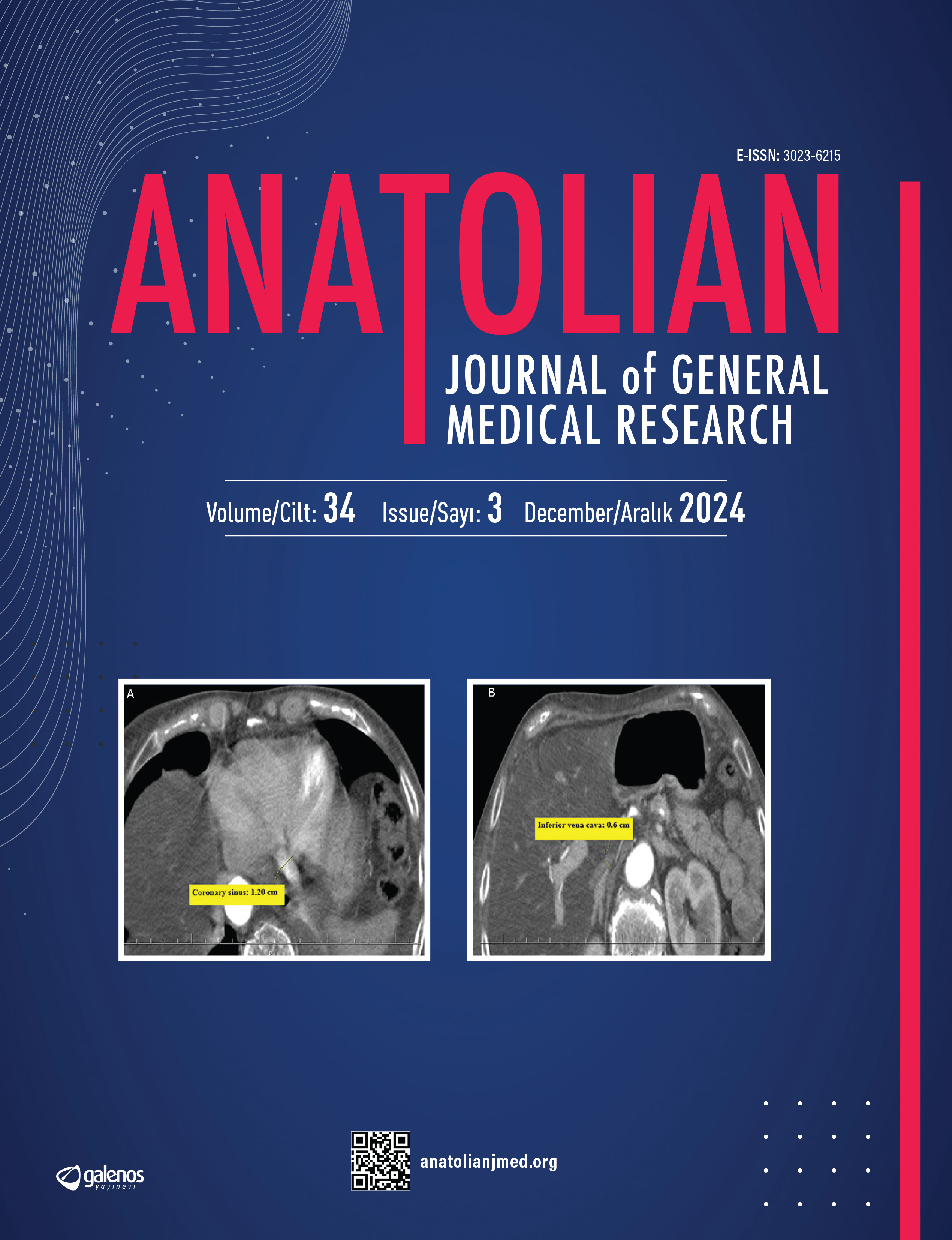








Evaluation of Fine Needle Aspiration Biopsy (FNAB) Results in Macrocalcified Thyroid Nodules
Ali Murat Koç1, Zehra Hilal Adibelli1, Zehra Erkul2, Yasemin Sahin21University of Health Sciences, Izmir Bozyaka Education and Research Hospital, Department of Radiology2University of Health Sciences, Izmir Bozyaka Education and Research Hospital, Department of Pathology
Objective: Thyroid nodule is the most common disease of the thyroid gland and is closely associated with thyroid cancer. The gold standard method in diagnosis is Fine Needle Aspiration Biopsy (FNAB). Although the relationship between nodules containing microcalcification and malignancy is well known, there is no consensus on the relation of nodules with macrocalcification to malignancy and the adequacy of FNAB. In this study, it was aimed to compare the results of FNAB of nodules with and without macrocalcification in US examination.
Methods: In this retrospective study, 466 nodules undergoing FNAB of 450 patients who applied for biopsy were included in the study. The demographic characteristics of the patients, US features of the nodules and cytopathology results of FNAB in the Bethesda classification were recorded. Nodules were divided into two main groups as calcified and non-calcified. US features and cytopathology results of the groups were compared.
Results: Transverse sizes of calcified nodules were found to be larger than non-calcified ones (p = 0.003). In addition, solid composition, hypoechoic and prominent hypoechoic echogenicity, and irregular border feature were found with a higher rate in the calcified group (p <0.001). No significant difference was found between insufficient sample/non-diagnostic cytology (Bethesda-1) ratios in both groups (19.2% and 14.7%). Cytopathologically, number of malignant and suspected malignant nodules (Bethesda 5 and 6) were found to be higher in the calcified group (p=0.05).
Conclusion: According to the results of this study, detection of macrocalcification in thyroid nodules in US examination does not cause a significant increase in insufficient FNAB results. However, the presence of macrocalcification increases the risk of malignancy of the thyroid nodule.
Makrokalsifiye Tiroid Nodüllerinde İnce İğne Aspirasyon Biyopsisi (İİAB) Sonuçlarının Değerlendirilmesi
Ali Murat Koç1, Zehra Hilal Adibelli1, Zehra Erkul2, Yasemin Sahin21Sağlık Bilimleri Üniversitesi, İzmir Bozyaka Eğitim ve Araştırma Hastanesi, Radyoloji Kliniği2Sağlık Bilimleri Üniversitesi, İzmir Bozyaka Eğitim ve Araştırma Hastanesi, Tıbbi Patoloji Kliniği
Amaç: Tiroid nodülü, tiroid bezinin en sık görülen hastalığı olup tiroid kanseri ile yakın ilişkilidir. Tanıda altın standart yöntem İnce İğne Aspirasyon Biyopsisi (İİAB)’dir. Ultrasonografik (US) incelemede mikrokalsifikasyon içeren nodüllerin malignite ile olan ilişkisi iyi bilinse de makrokalsifikasyonu olan nodüllerin malignite olan ilişkisi ve İİAB yeterliliği konusunda bir görüş birliği bulunmamaktadır. Bu çalışmada, US incelemede makrokalsifikasyon içeren ve içermeyen nodüllerin İİAB sonuçlarının karşılaştırılması amaçlanmıştır.
Yöntem: Bu retrospektif çalışmaya, biyopsi istemiyle başvuran 450 hastaya ait İİAB yapılan 466 nodül çalışmaya dahil edildi. Hastaların demografik özellikleri, nodüllerin US özellikleri ve İİAB’ye ait Bethesda sınıflamasında sitopatoloji sonuçları kaydedildi. Nodüller, kalsifiye ve non-kalsifiye olarak iki ana gruba ayrıldı. Grupların US özellikleri ve sitopatoloji sonuçları karşılaştırıldı.
Bulgular: Kalsifiye nodüllerin transvers boyutlarının non-kalsifiye olanlardan daha büyük olduğu tespit edildi (p=0,003). Ayrıca, solid kompozisyon, hipoekoik ve belirgin hipoekoik ekojenite, düzensiz sınır özelliği de kalsifiye grupta daha yüksek oranda tespit edildi (p<0,001). Her iki grupta yetersiz numune/tanısal olmayan sitoloji (Bethesda-1) oranları arasında anlamlı fark saptanmadı (%19,2 ve %14,7). Sitopatolojik olarak malignite şüpheli ve malign nodüllerin (Bethesda 5 ve 6) ise kalsifiye grupta daha fazla olduğu tespit edildi (p=0,05).
Sonuç: Bu çalışmanın sonuçlarına göre, US incelemede tiroid nodüllerinde makrokalsifikasyon tespit edilmesi İİAB sonuç yetersizliğinde anlamlı artışa neden olmamaktadır. Bununla birlikte, makrokalsifikasyon varlığı tiroid nodülünün malignite riskini arttırmaktadır.
Manuscript Language: Turkish
(8855 downloaded)




